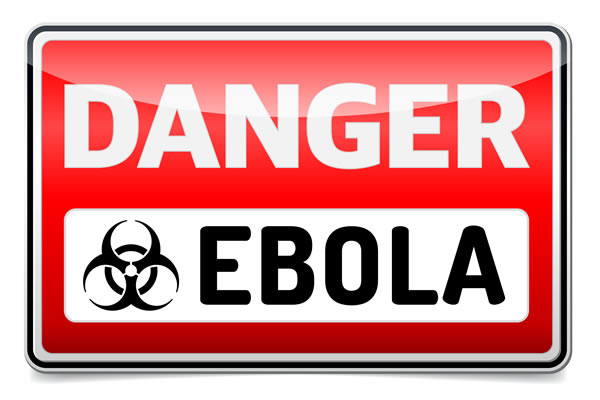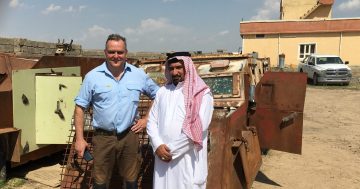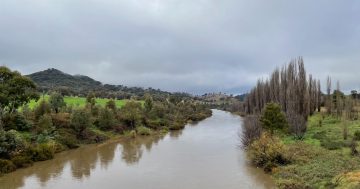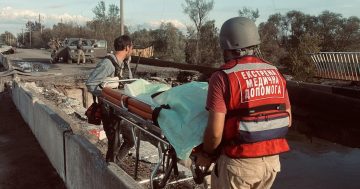
Our friends have been frightening each other on Facebook by following the news about the recent ebola outbreak in Africa and speculating about how we would fare if it came to Australia. We heard from some local experts, Professor Peter Collignon AM, Infectious Diseases Physician and Microbiologist at Canberra Hospital, about the resources Canberra has available to deal with infectious disease outbreaks, and Associate Professor Sanjaya Senanayake, a practising infectious diseases physician at the Australian National University Medical School, more generally about how ebola works.
What is ebola
Ebola is a recently discovered virus, having been with us since the mid 70s. Despite the deadly nature of four of the five strains, a fifth, the Reston Ebolavirus, found in the Phillipines and China, does not cause disease or death in humans.
The disease is spread through bodily fluids and the rumours going around facebook of it becoming airborne are completely rubbish. Theoretically the disease can be spread by any body fluid but the practical risk is only present in the blood of a very sick person. The initial spread of disease was caused by family members caring for the sick or preparing the dead for a funeral. It was exacerbated by hospitals not having enough resources to set up simple procedures like wearing one-use gloves to treat patients and keeping people isolated.
Ebola begins by resembling a flu, with pain and tiredness. Later a rash may appear and eyes turn red. Finally, toward the end of the disease blood clotting is impaired so people may begin to bleed internally while their liver and kidneys also come under attack.
Medical interventions and research
No treatment exists but MSF has increased survival to as high as 75% in some of their better resourced treatment centres.
Interventions include oxygen and fluids, controlling blood clotting and treating any secondary diseases that may appear.
Research into antibody treatment has been promising but in scientific articles and news about the two Americans who were recently treated with a mouse-derived antibody we see the words “may be” appear frequently, indicating that enough information has not yet been gained to draw a conclusion, or even get very hopeful.
Preventing ebola from entering Australia
Our geographical isolation is always Australia’s advantage in terms of quarantine. Under biosecurity guidelines, standard procedures are in place to identify any possible illness of passengers on board incoming flights. The system operates informally but pilots will report any deaths, illnesses or specific symptoms of concern that have developed during the flight.
Permission to disembark passengers and crew upon landing is assumed to be granted if there is nothing to report and where patients show symptoms of disease the ground crew may issue different instructions to the pilot.
Ground crews are on alert for symptoms and the time taken to travel here meanspatients would be likely to show symptoms before arriving.
Canberra’s health protection resources
Professor Collignon reports that from time to time people do present in Australia with flu-like symptoms following a trip overseas. The discovery of an easily treated disease like malaria is possible with a blood test and prompt treatment in this case will often save lives.
Now that the world is on alert for a possible ebola outbreak the lab would also check for ebola. A 24 hour turnaround would be possible and patients could be treated very early in the disease progression. American hospitals have already provided a model for isolating sick travellers until they know what disease they have.
ACT Health already has a variety of resources available to them to help identify people who may have come into contact with a virus. In the case of a measles outbreak, for example, they will often issue a media release to warn people who may have been exposed. For a foodborne disease they have people who can visit restaurants and markets, chat with people who might have dined with the patient and track down disease vectors. Any of these resources could be re-directed to help track down a bloodborne illness.
Can it truly be contained?
This is where your heart breaks. Professor Collignon has all confidence that an ebola outbreak could be easily contained in Canberra and reminds us that when African hospitals talk about being under-resourced they mean something very different from what you imagine.
MSF reported this week that they have reached the capacity of their teams to treat the sick and require more trained doctors. The countries in which they are working have statistics like one doctor per 10,000 people and not enough rubber gloves to examine and treat patients.
Liberia’s capital city of Monrovia has a million people and all the hospitals are closed. A 120 bed treatment centre was opened this week and is already overwhelmed.
Compared to this, Canberra would have it easy. We could easily test anyone who had appeared with the symptoms or reported coming into contact with body fluids of another person who had recently been in West Africa. We could easily deploy public health warnings to anyone who may have come into contact with the body fluids of the sick. We could even use our many media outlets to raise awareness. And our hospitals have enough resources to treat the sick even if an outbreak like the one seen in Liberia meant some other patients would have to wait a little longer for treatment. There is always room for improvement but we are incredibly lucky.
To donate to MSF
To work with MSF
Additional research funding has already been given to the most promising treatment and vaccine candidates.


















